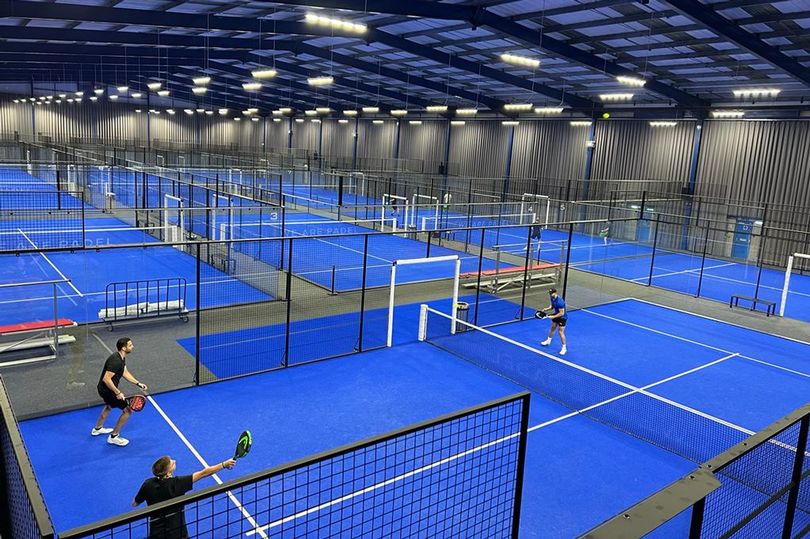Why older players are dominating professional tennis and other articles you need to read this month
5月 26, 2018
As active people with a passion for tennis and other racket sports, we try to keep up with news, analysis and product launches related to our hobbies and broader lifestyle. Because we appreciate getting sent incisive long-form articles, links to podcasts and documentaries, and information about genuinely innovative companies and products from our friends, we thought others might value receiving this information too.
Starting now, we are going to send out a monthly digest of curated content in a variety of mediums slightly out of the mainstream that we found particularly thought-provoking and enlightening:
A new angle on the much-discussed age and performance trend in professional tennis

Brief summary:
Commentary about the reasons behind the strikingly older age of top tennis players on both the WTA and ATP Tours in recent years isn’t new. Much of the analysis points to the possibility of trends being skewed by a ‘golden age’ of tennis on the men’s tour led by a seemingly ageless Roger Federer and/or the impact of technological advances in gear.
This article provides links to some of the published analysis of the success of 30-somethings but also offers a new line of thought: the exponential increase of prize money for late rounds in big tournaments has resulted in a threshold at the top of the game where there is an ‘escape velocity’ and virtuous cycle of the top players being able to afford the best coaching, trainers, nutritionists and comfort (broadly speaking) that allows them to consistently perform at the top of their abilities and win a high percentage of their matches.
What caught our eye:
Only the top 336 men and 253 women are making some semblance of profit from playing professional tennis. That said, even the 92nd ranked player on the ATP Tour scrapes by in budget hotels and doesn’t have a dedicated coach. Also, the number of new players breaking into the top 100 per year is on a steady downward trend (30 in 1985 to ~15 in 2015 on the ATP Tour and 23 to ~18 on the WTA Tour).
A deep dive on differences between serve effectiveness on the ATP vs. WTA Tours

Brief summary:
There are various hypotheses about why most players on the WTA Tour get broken much more often than their male counterparts on the ATP Tour. Some of the assumptions revolve around the ubiquitous aggressive baseliner game style that translates well to strong returning, others point to the disparity in baseline upper body strength between the sexes. This article looks into whether the explanatory variable is actually predominance of technically flawed serving on the WTA Tour.
What caught our eye:
The largest technical disparity between male and female professionals was in pushing off with their back legs, which 75% of the men in the study did effectively compared with only 28% of the women. Also, this quote from Federer on the topic was eye-catching: “I think that first coach that teaches you the serve is super important — maybe emphasis in the women’s game is not the number one [priority]. They spend much more time returning. I feel, that we don’t do at all. I don’t, anyway. I don’t practice my return at all.” Quite an astounding admission that Federer doesn’t specifically practice one of the most important shots in tennis…!
The latest interview with Federer on his approach to tennis and life in general

Brief summary:
We might be biased, but as Federer has opened up in recent years it’s been incredibly interesting to hear his candid takes on balancing his life and what’s going through his mind as he’s breaking record after record whilst inching closer to retirement from the game he adores.
What caught our eye:
Fed’s kids play a bit of tennis:
He calls it ‘one of [his] mini-requirements with Mirka’. He says, “Don’t get me wrong, I don’t want them to be professional players, but I would like them to play recreationally.”
His current thinking on retirement:
“I’ve long given up that it needs to end in a fairy tale,” he says. “I don’t need to be ranked [No. 1] or need it to be after a big title. If it happens that way, that’s amazing. But you can’t control it all. You have to put yourself out there, be vulnerable. I play because I love tennis, not because it needs to end with a [perfect] situation.”
Is he afraid to retire?
“No,” he says. “The only thing [he] wonder[s] is: How will it be, the moment of retirement? How emotional will it be? Where is it going to be? What will lead to it? Is there a process—or do you wake up and decide at once?” Maybe [he won’t] get to decide. “Exactly,” he says. “The unknown. I think that’s quite exciting.”
A series of Roland Garros predictions from tennis pundits

Brief summary:
This article is a round up of predictions by tennis experts that follow the tour on a daily basis about the biggest storylines related to the French Open. Some takeaways: all think the tournament is Nadal’s to lose with Zverev and Thiem being top contenders. Two rising teenage stars - Shapovalov and Tsitsipas - have had some solid recent results and could make a run in the Slam. On the women’s side, most think that the draw is slightly less wide open than in recent years. Halep and Svitolina could win their first French Open titles but dark horse Maria Sharapova has turned around a dire start to the clay court season and you can never count three-time champion Serena out.
What caught our eye:
The differing views on whether Novak - a champion in the past - can make a run at the French Open given his strikingly inconsistent performances in 2018. Similarly, whether unseeded 449th ranked Serena Williams (2-2 in 2018) can get deep into the draw largely based on her aura. Most think it would be unlikely that she could make it into the second week but all are loathe to rule that eventuality out.
The launch of a portable, economical ball machine

Brief summary:
We keep a lookout for innovation in tennis, and in products for people with active lifestyles in general. We recently found (an already successful) Kickstarter campaign in progress raising funds for a portable ball machine that runs on battery power. The machine is at a price point that is affordable for individuals, in contrast to the ‘enterprise’ level ball machines that are only cost effective for clubs.
What caught our eye:
This falls into the ‘why didn’t we think of that?!’ category. In our experience, ball machines are tedious to book or simply unavailable. Few clubs invest in the latest versions as well, so even if you can book a machine it’s often an old, glitchy piece of equipment. However, when we do get the chance to use them, there is a lot of value in the ability to hone particular shots or work on technical fixes to your game. Having your own machine (which doubles as a ball holder for serving) to use at your leisure could literally be a game-changer.
Also in Tennis Hacks

テニスプレーヤーに最高の贈り物
8月 08, 2025
テニス中毒の親/友達/おねしょ/パートナーにとって理想的なテニスギフトを探していますが、刺激を受けていませんか?私たちは調査を行い、さまざまな価格帯の新鮮なアイデアのリストを思いつきました。オプションには、これまで聞いたことがないかもしれないが、テニスの世界に波を起こすエキサイティングな新しいブランドが含まれます...

The 10 Best Gifts for Padel Players: Padel Bags, Covers & More
8月 05, 2025

The definitive guide to tennis bags for travel
8月 01, 2025
Flying with tennis racket can be a perplexing experience. Each airline has a different policy that may or may not give explicit instructions about your tennis gear. Fear not! We've done extensive research on this topic and provided an overview of the requirements of the major airlines. A little preview? Our Backpack and 24 Hour bag comply with carry on restrictions across the board...
Be the first to hear about new products, sales, give-aways and more...
© 2025 Epirus London.
Shopifyを搭載

